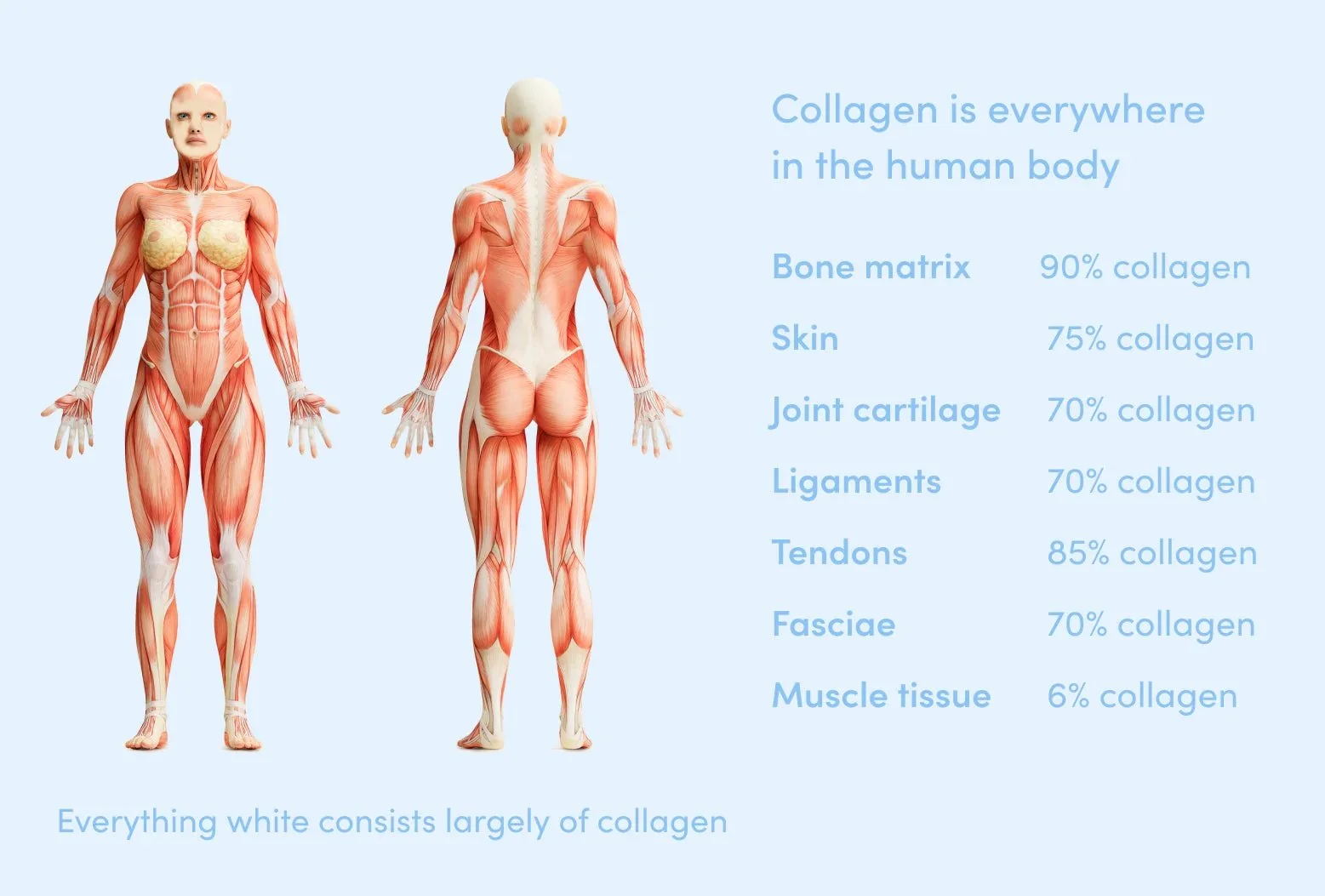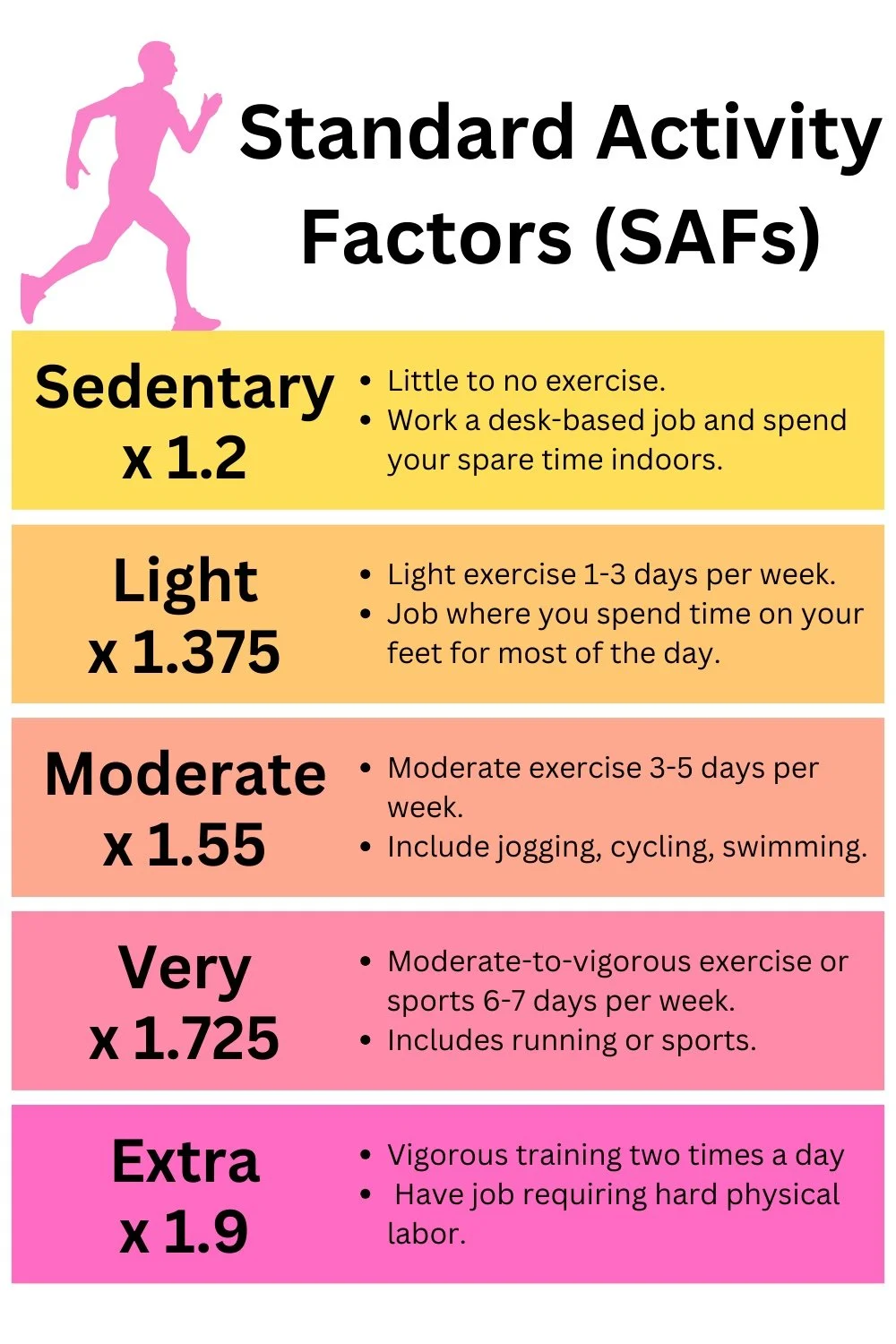Crafting a Bioenergetic Diet
Since last week I discussed the functions of the different macros this week I’ll be showing you how to calculate the amount in grams of each macro you’ll need for a bioenergetic diet. I’ll also discuss timing, rhythm and the basics of movement from a pro-metabolic standpoint.
TLDR:
Energy Balance refers to calories in/calories out (CICO) and has both merits and flaws.
Your body weight multiplied by .82 is the amount of protein in grams you should aim for in a day.
The amount of protein grams doubled is your carbohydrate goal in grams/day.
Your total daily calories multiplied by .028 is your fat intake in grams - equivalent to 25% of daily calories.
Determine if you can eat 3 or 4 meals/day and then divide your total macro grams by the amount of meals. This is your macro split/meal.
Spend a few minutes in Cronometer to find foods you like that that meet your macro splits/meal and are easy for you to digest
A calorie is a unit of potential energy. When referring to food and nutrition, we typically mean kilocalories (kcal), which equals 1000 calories. 1 kcal is the potential energy needed to raise the temperature of 1 kilogram of water by 1°C. The main sources of calories in food are carbohydrates at 4 calories per gram, protein at 4 calories per gram, and fat at 9 calories per gram.
In order for this potential energy to be converted to functional energy it must be digested and absorbed in the gut, transported and taken up by the cell, and finally metabolized in mitochondria to produce ATP, water, and CO2.
“Energy Balance” refers to the relationship between energy intake (calories consumed) and energy expenditure (calories burned). As I just mentioned, there are many steps in between food intake and energy produced. This tends to be the focus of bioenergetics. If there are bottlenecks along this pathway, the relationship of calories in/calories out (CICO) is not direct. However, CICO does have some merits.
Total Daily Energy Expenditure (TDEE) refers to the total amount of calories needed to fulfill your daily tasks and exist. Keep in mind that another way of looking at energy expenditure is energy production. TDEE is broken down into a few categories.
Basal Metabolic Rate (BMR) represents the energy used for basic bodily functions at rest. It accounts for roughly 70% of TDEE and is influenced by factors like gender, weight, muscle mass and most importantly, mitochondrial/thyroid/cortisol status. It can fluctuate up and down depending on many factors one of which is whether or not you’re eating enough calories and carbs. This study demonstrated that only after 3 weeks of caloric restriction BMR was reduced by 15%!
I have also showed in past articles that BMR has decreased significantly over that last 70 years. In the 1950s, people on average ate 50% more calories yet were significantly thinner, had far less metabolic disease, and were 2 degrees warmer. Here’s an example of the failure of CICO as an explanation.
Since BMR represents the bulk of your caloric burn/energy production, increasing BMR is the focus in Bioenergetics. The conventional way to increase BMR is by increasing lean mass. This is true and is an important goal. Additionally you should focus on improving thyroid status through eating more carbohydrates and calories, reducing fat intake, sufficient selenium consumption, improving liver function, and possibly taking natural dessicated thyroid until body temp reaches optimal. Reducing your PUFA intake, fixing your gut aka reducing endotoxin, getting more sunlight, and reducing xenoestrogens are some of the other major ways to improve your BMR.
Thermic Effect of Food (TEF) is the energy used for digestion, absorption, and metabolism of nutrients. It represents about 10% of TDEE. TEF will vary based on the macronutrient composition of your diet. Animal protein requires the most energy for digestion followed by starches.
Non-Exercise Activity Thermogenesis (NEAT) refers to the energy expended for all activities that are not sleeping, eating, or exercise. In other words, its the energy expended through activities like working, walking, fidgeting, chores, chasing after your kids, and generally just moving around your day. NEAT can account for 15-30% of TDEE and is highly variable between individuals. NEAT is one of the best way to expend calories and primary way our ancestors did outside of BMR.
Exercise Activity Thermogenesis (EAT) is energy burned during planned exercise and represents that smallest energy expenditure. For most people it composes only about 5% of TDEE.
From a pro-metabolic standpoint, planned workouts should be aimed at muscle hypertrophy rather than caloric burn. Since it represents such a small amount of caloric burn relative to NEAT, you’re going to get a much higher rise in BMR from increased muscle mass. If you want burn calories and make energy, focus on increasing BMR and NEAT.
Also, the more EAT (high intensity movement) you do, the higher you raise cortisol. So the optimal way to balance this is with short duration, heavy lifting followed shortly after by carbs. The low intensity caloric burn of NEAT has a much smaller impact on raising cortisol and negatively affecting thyroid.
The famous strength coach Mike Metnzer also figured this out through his own experience. He ate four meals/day, 60% carb/15% fat/25% protein, 3-4 days of rest between lifts, and highlighted the importance of deep, long sleep. Mentzer advocated for heavy weight at low volume. In essence, he attributed his success to high carb intake, long rest periods, and hypertrophy.
Consider that a pound of muscle burns about 6-7 calories of fat per day at rest while also contributing to increased energy expenditure during activity. Gaining 10 pounds of muscle increases daily energy expenditure by 90-100 calories and makes you more insulin sensitive. BTW, Ozempic and other GLP-1 agonists reduce your lean mass, BMR and thyroid function due to a cortisol-induced starvation response.
I’ll use myself here as a case study. Before applying bioenergetics (Q4 of 2023) I was eating 2500 calories, 45% fat 45% carb 10% protein, walking 10k steps/day and 3 planned workouts/week of about 60 mins duration. I weighed 199lbs and was 19% body fat. Today I’m eating 3300cals, 55% carb, 20% protein, 20% fat, 190lb and 15% body fat, walking 12k steps/day, and 4 planned heavy lifts for a duration of 30 mins each. I’m also 1.3 degrees warmer, have more energy and my hormone profile has improved.
Let’s now look at structuring your macros.
Last week I covered the importance of protein for structure, not energy, as well as the ideal per pound amounts. If you’re a man and less than 26% body fat or a woman and less than 39% body fat, here’s your math:
Your bodyweight in lbs x .82. In my case, 190lbs x .82g/lb = 155g protein/day.
If you’re over 26% as a man or 39% as a woman you’re going to multiply your lean mass by 1g/lb.
For example, if you’re 170 lb woman at 40% body fat, that’s 102 lbs lean mass. 102lbs x 1g/lb = 102 g protein/day.
In any case you’ll want 30% of your protein to come in the form of collagen. This could be bone broth, gelatin or collagen peptides. Amino acid balancing is an important part of the pro-metabolic diet. If your protein is coming from mostly muscle meats, there will be excessive amounts of methionine which is associated with shorter lifespans. Balancing methionine with glycine extends lifespan. Also, 30% of the protein in your body is collagen so supporting this structure has a big impact on joint health, skin elasticity and bone mineral density.
Using myself as an example, that’s 155 x.3 = 46.5g/day and my preference is bone broth in the winter.
This study found that cortisol concentrations were consistently lower during a high-carbohydrate diet compared to a high-protein diet in normal men. In this meta-analysis of 27 studies, low-carbohydrate diets increased resting cortisol in the short-term (3 weeks), led to a higher cortisol baseline once stabilized, and led to much higher post-exercise cortisol after exercise of 20 minutes or more.
Ideal carb intake for energy production and cortisol management is at least twice the amount of protein grams. In my case of eating 155 grams protein that’s 310 grams of carbs/day.
To figure out your fat intake we first need to calculate TDEE.
TDEE = BMR x activity factor (above)
After using the Katch-Mccardle formula to calculate your BMR, take that value multiplied by your activity factor.
The activity factor is simply a general multiplier used to determine a person's activity level. It’s meant to represent all energy expenditure beyond BMR which includes TEF, NEAT and EAT.
For example, my BMR is 1900 calories and I’m considered “Very” active at 12k/steps day with 4 workouts so my TDEE would be 1500 x 1.55 = 3278 calories/day.
Now multiply your TDEE x .028 = grams of fat per day
Using myself as an example, TDEE is 3278 x .028 = 91 fat/day
Next, determine if you can eat 3 or 4 meals/day and then divide your macro grams by the amount of meals. This is your macro split/meal.
So, my total macros for the day are 155g protein, 310g carbs, 91 grams fat. If I eat 3 meals/day that’s about 51g protein/103g carbs/30g fat per meal.
Next go into Cronometer and find foods that you like to eat and are easy to digest. My breakfast looks like this.
I’m able to massage the total macros for the day by the meal. In other words, I keep an eye on how well I’m meeting the targets as I go through the day. So If I’m low or high relative to my daily target I adjust lunch macros based off breakfast to stay on track for dinner.
You’re better off metabolically, for glycogen storage and energy production, to get more food in earlier in the day than later. You’ll sleep better too. You don’t want to back load your food intake.
This is hard at first because if your metabolism is slow you won’t be hungry in the morning. Just east as much as you can at breakfast, as close to waking as possible and your metabolism will start to increase. This also prevents you from smashing a pint of ice cream before sleep throwing off your fat macros. Don’t get me wrong, high-quality ice cream is a super food. Just eat lower fat during the day to maintain your fat macro target and leave 2-3 hours before bed to allow for gastric emptying which leads to deeper sleep.
Keep an eye on your fat profile to maintain your PUFA intake below 5g/day. You can find that in Cronometer as well.
Lastly, please understand increasing metabolism is a long term process (just like decreasing it was). Your metabolism won’t change over night and it can take months. If you’re eating high fat, you’ll need to reduce that slowly while your increasing carbs to avoid gaining weight. Of course in order to do that you need a baseline so documenting what you’re eating now is crucial.
And, next week I’ll detail getting sufficient micronutrients since we’ve worked out macros.
To your health,
Jonathan
This is for informational purposes only and should not replace professional medical advice. Consult with your physician or other health care professional if you have any concerns or questions about your health.







